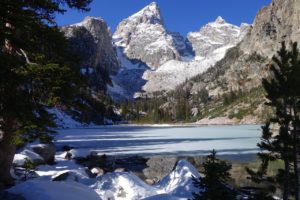TERRESTRIAL ANALOGS
In their insightful book Rare Earth: Why Complex Life is Uncommon in the Universe, Peter Ward and Donald Brownlee propose that life may be ubiquitous in the universe, and give many good reasons why this could be so. For example, they note that some of the simplest life forms we have identified can survive in unimaginably harsh environments. They also point to the very real possibility that life on Earth began elsewhere, arriving here on or in space rocks and subsequently responding to (and contributing to) the profoundly life-friendly conditions on this most fertile of planets.
Ward and Brownlee don’t stop here. They go on to argue that the universe is a hostile place and Earth is so rare that life may not have evolved beyond simple microbes anywhere else. Earth is just that special. And, as we would all hope for such a bold idea, they support it by mining the rich gems of knowledge geology and cosmology contribute to our appreciation of the extraordinary sequence of miracles that became Earth. The odds of so many essential events unfolding in one place are so small that it might take more than a universe to repeat them. In the cosmic scheme of things, we have inherited the magic kingdom, and it would be a good thing if more of us understood this.
It goes without saying that Mars and Earth are radically different places. But given what we are learning about other planets that we have just recently discovered, it is becoming increasingly clear that Mars and Earth also have much in common. So much, in fact, that Mars may once have supported life too. Ward and Brownlee imagine this was probably the case, and posit that Mars may have even seeded Earth with its first life. And while we are looking far beyond our solar system for planets that might be habitable, we are also allocating a lot of resources to learn all we can about the Red Planet.
For a lot of reasons, this is a really good idea. Mars is enough like Earth that we can look to natural diagenetic processes here to better understand what we are seeing there. These terrestrial analogs provide plausible explanations for many martian surface features, and suggest a wet and relatively warm environment at some time in the past. But using Earth to understand Mars serves another – and perhaps more important – purpose. Analogs also create mirrors that reflect original things back to us in a new light. In this case, by using Earth to better understand Mars, we also gain a new appreciation for how difficult life could be here if things were only a tiny bit different. If the only thing that comes from our Mars exploration is a greater appreciation for what we already have at home, it is still well worth the effort.
University of Utah Professor Margie Chan is one of those cutting-edge geologists who is applying established principles of terrestrial sedimentology to our observations on Mars. This Tuesday, (October 18th) at the Teton County Library Auditorium at 6:00 pm, she will explain the terrestrial analogs that are of value so far, and what they imply about Martian geology.

